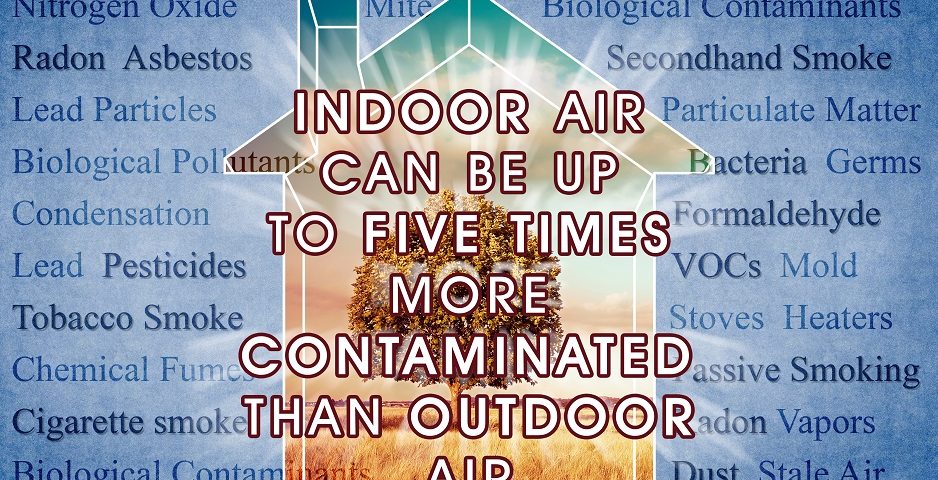How Healthy is the Air Inside Your Home?
Basic Mold Cleanup
August 24, 2016
Making Homes and Buildings Safer Inside Post-Covid
February 25, 2022Among the many lessons we’ve learned during the Covid-19 pandemic, one of the most important is that air quality matters. Whether it’s the amount of time we’ve spent inside due to lockdowns or the perils of entering indoor spaces, indoor air quality is now front and center on many homeowners’ and business owners’ minds.
Covid Brings Attention to Indoor Air Quality
Covid left no doubt in anyone’s mind that poor air quality can cause illness. Consequently, there’s been a paradigm shift in the way people view the connection between illness and air quality. People now realize that they may have to take extra steps to be able to breathe clean virus-free air in their indoor spaces.
Now that more commercial businesses are starting to open up and bring back both employees and customers, much more emphasis has fallen on workplace safety and air quality in order to protect the health of all occupants. And especially after enduring the physical and emotional ravages of Covid, homeowners with underlying health issues and chronic conditions are far more attuned to the safety of their home environment and how unhealthy air can lead to poor health.
What is Indoor Air Quality?
When we talk about indoor air quality, we are referring to how the air inside homes and buildings impacts the health and safety of those who occupy them. Many different components have a hand in the quality of indoor air such as the humidity, temperature, and ventilation in addition to chemical and biological contaminants present within a household or building. A problem with any of these things can result in serious health issues if not addressed properly. One of the things that many people fail to realize is that many pollutants are more harmful indoors because their concentrations are much higher. In fact, concentrations of many pollutants are often two to five times higher indoors than outdoors.
Indoor Air Quality as Environmental Risk
Believe it or not, indoor air pollution has become one of the top five environmental risks to public health. Indeed, studies have shown that approximately 3.8 million people around the globe die as a result of indoor air pollution annually. The Environmental Protection Agency estimates that poor indoor air quality affects 33-50% of commercial buildings throughout the U.S. and winds up causing over 10 million lost workdays every year.
Some of the many health problems that people experience because of indoor air pollution include respiratory issues, worsening allergies, headaches, heart disease, cancer, and even death if pollutants like carbon monoxide occur in high enough concentrations.
Biological Pollutants That Harm Indoor Air Quality
Mold
One of the most common biological pollutants, mold spores exist nearly everywhere outdoors and in many indoor areas as well. The reason why mold is so prevalent indoors is that the spores can find their way into your home through doorways, vents, and windows. They can even latch on to your clothing or shoes.
In most cases, mold growth happens around areas with high humidity or water damage such as a damp basement or bathroom or leaky roof. Mold can cause health problems such as eye and throat irritation, coughing and wheezing, as well as other upper respiratory systems. Furthermore, mold can be especially troublesome for people who have allergies or other respiratory conditions such as emphysema or asthma.
Allergens/Pollen/Bacteria/
No matter how clean a home is, dust mite allergens will be present. Unfortunately, they are one of the most powerful biological allergens, which can worsen conditions like asthma. They are far from the only threat to your indoor air as pet dander, pollen, and other airborne bacteria can also make their way into your home and cause problems.
What Can You Do About the Air Inside?
If you suspect that allergens are present in your carpets or indoor air, you should contact a qualified expert in indoor air contaminants about testing to find out which environmental hazards are present in your home. Based on their findings, they can recommend the best course of action to eliminate or reduce your exposure to known allergens.
Indeed, every homeowner and business owner should get an air quality inspection just like they would get an annual medical exam. If you truly care about your health, you need to find out exactly what you’re breathing in.
With states increasingly mandating inspections and testing for new home construction and sales, not to mention the lessons learned from COVID, mitigating mold and other common biological pollutants to ensure your indoor air is safe to breathe has never been more important.





